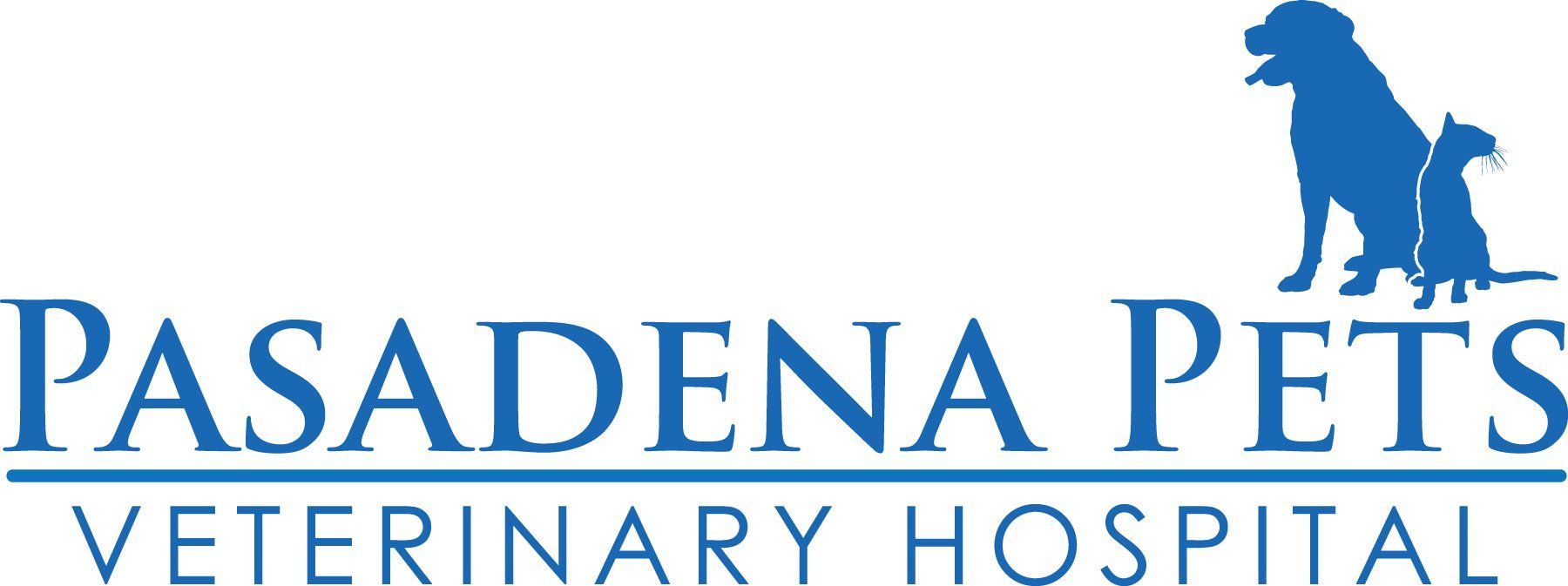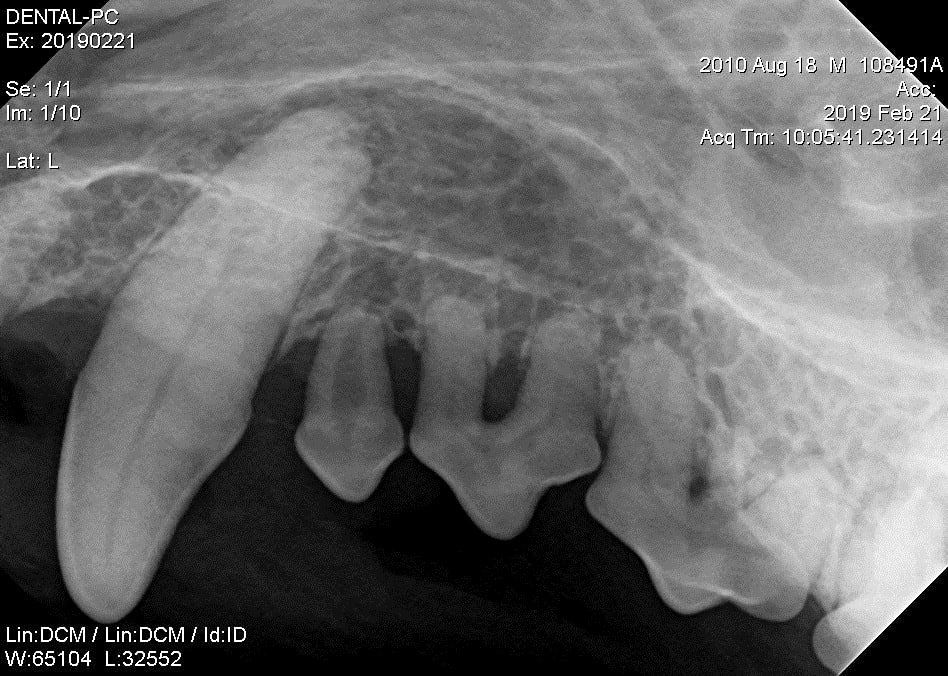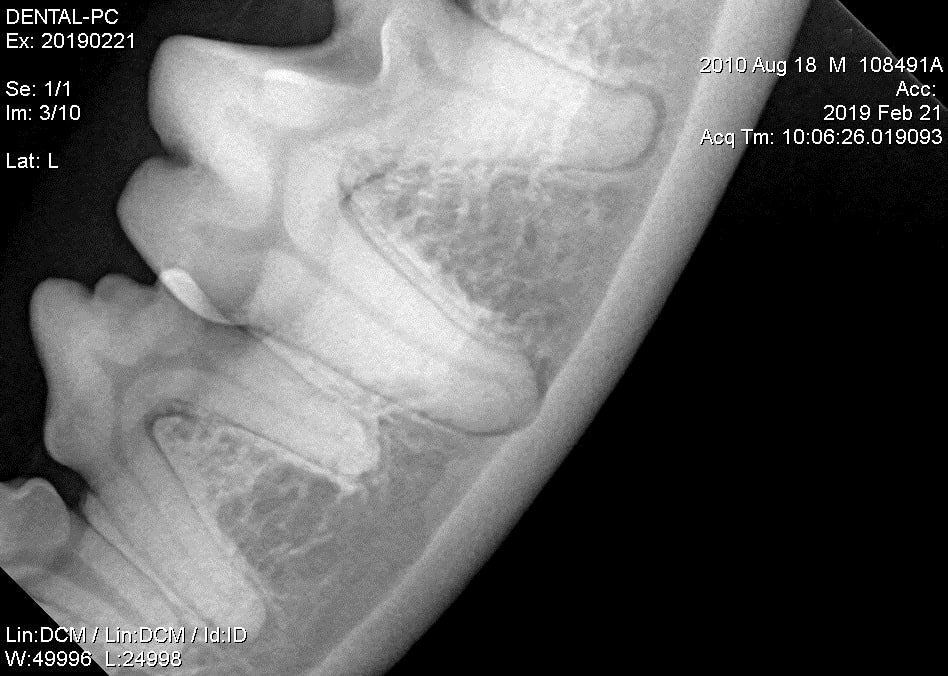Dental Disease in Pets
Since your pet can’t communicate pain with you, it can sometimes be difficult to identify issues with the teeth, gums, or mouth. In a recent study published by The American Veterinary Dental Society, it was said that more than 80% of all dogs, and 70% of cats, develop some sort of gum disease by the age of 3 years old. If plaque and calculus accumulate in your pet’s teeth, specifically below the gum line, then periodontal disease can become an issue. Sings of periodontal disease and how it progresses can include:
To prevent your pet from developing periodontal disease, or to stop the current progression of the disease, it’s important to take preventative measures in your pet’s oral care. Prophylactic treatments are recommended to keep your pet’s teeth clean, as well as other treatments like ultrasonic scaling, sub-gingival manual scaling, and polishing. Like any other dental procedure with your pet, these treatments are performed under general anesthesia with minimal risk to your pet. Your pet’s oral health is vitally important to their overall wellbeing, so it’s very important to make sure their smile is healthy, so they stay happy.
Dental Root Canal Case Study
This is Henrietta, she is an 8 year old German Short haired Pointer. During her annual examination we discovered that she had a broken tooth. Owner did notice that she seem to be eating more gingerly on her right side of the mouth.
Periodontal Treatment. Emdogain is a great way to help.
10 Year Study of Emdogain File
Case Study Before & After
Before & After
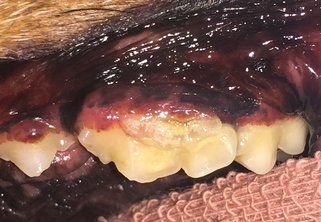
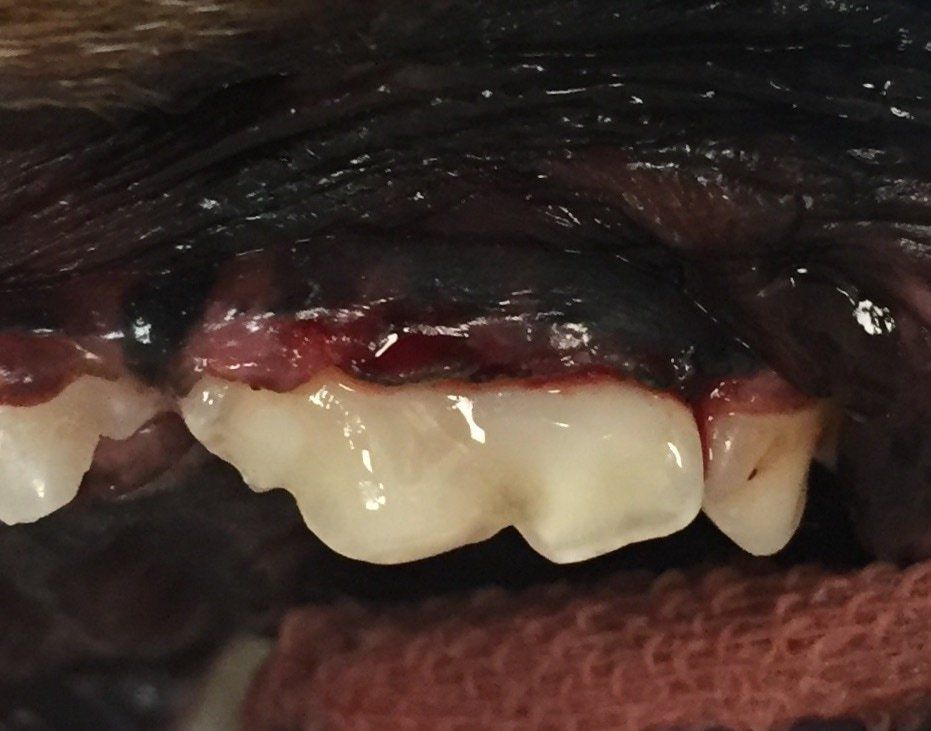
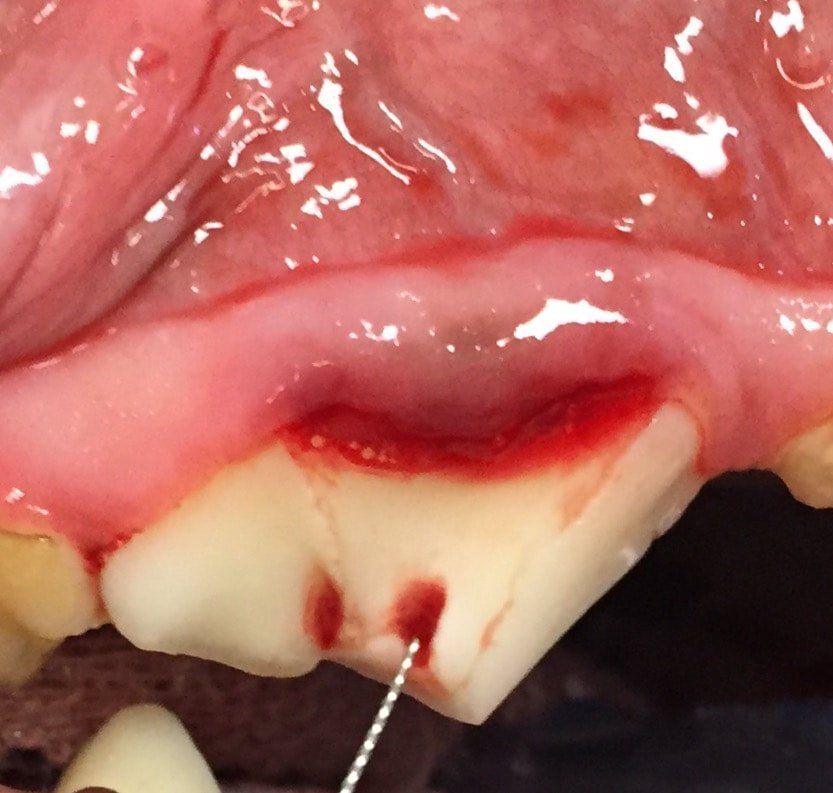
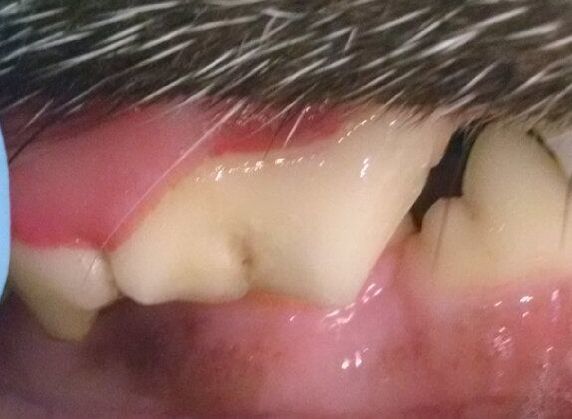
X-Ray of Teeth
Dental Extractions and Fillings
There are numerous reasons why a dog or cat tooth would need to be extracted, and some of the dental problems leading to tooth extraction often can be prevented, or at least minimized.
Periodontal Disease
One of the most common diseases found in dogs and cats, and it results from the immune system's inflammatory reaction to plaque bacteria that leads to the destruction of periodontal tissues.
Complicated and Uncomplicated Crown Fractures
Complicated crown fractures are occurs from our pets chew on hard objects and it is painful for them. Uncomplicated crown fractures are common causes of endodontic disease and it involves the enamel and underlying dentin, but do not extend into the pulp chamber.
Tooth Resorption
This is commonly identified in cats affecting 1/3 of the feline population, results in the destruction of the tooth structure and possible nerve exposure and pain. The recommend treatment or tooth resorption with nerve exposure is always extraction.
Caries (Cavities)
Cavities are often caused by bacterial breakdown of highly refined carbohydrates resulting in the production of lactic and acetic acid that erode enamel and dentin. Root canal may be an option if no extensive destruction took place, but extraction is often the only option.
